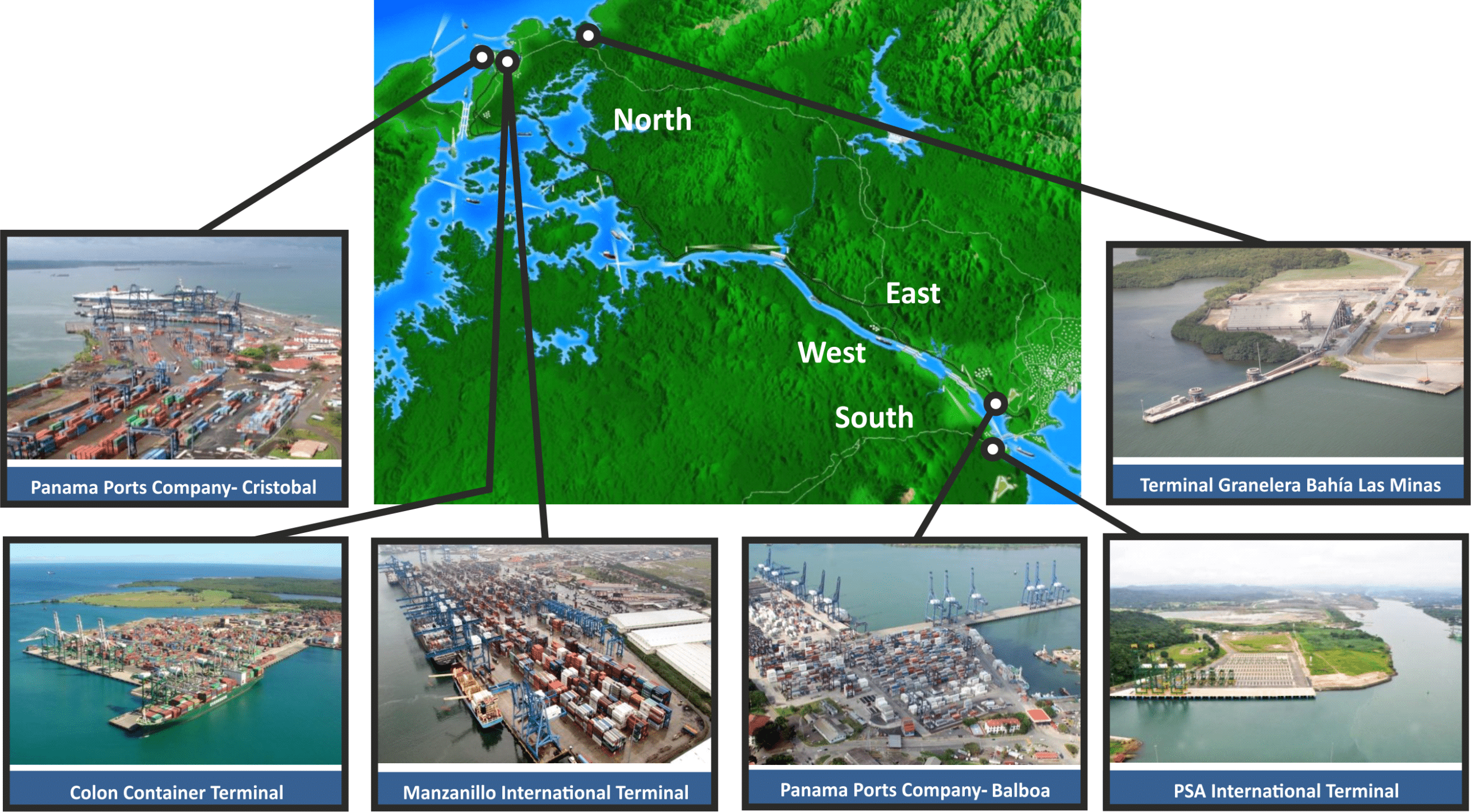
Port Information – Dry Cargo
Panama
National Containers and Dry Cargoes Ports System
PACIFIC SECTOR
Panama Ports Company – Balboa
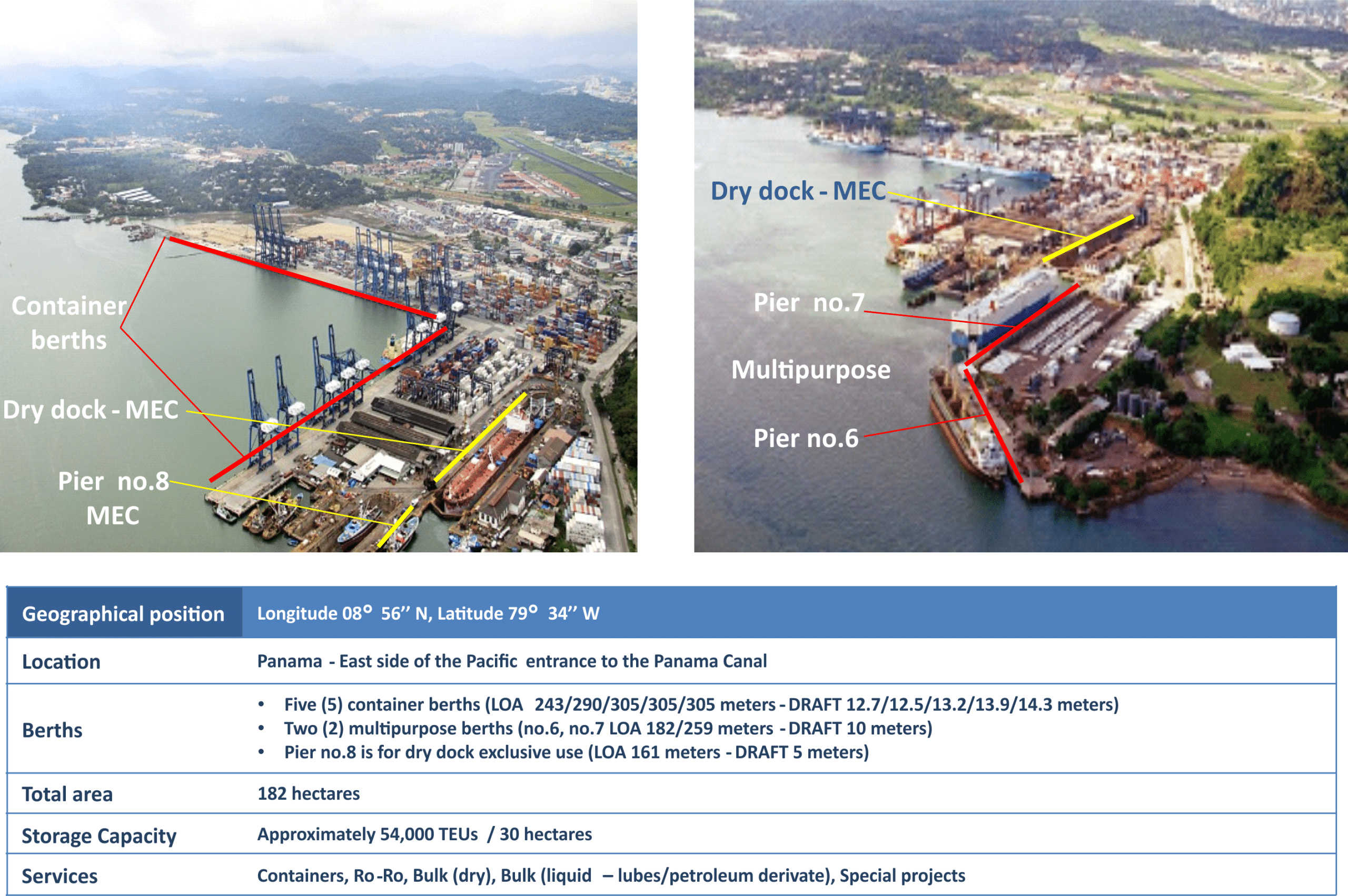

- Terminal has five (5) piers for container vessels and from those, three (3) are equipped with Post Panamax and Super Post Panamax gantry cranes
- Terminal’s core business is containerized cargo therefore is very congested with container liner service vessels and have preferences over any other type of vessels
- Terminal has train connectivity to Cristobal and Manzanillo International Terminal for container transshipment
- Pier no.6 is designated for general cargo, Ro Ro, bulk (dry and liquid) and is heavily demanded and constantly occupied. Vessels could easily wait up to 7 days to find berth space. Vessel’s with beam over 100 feet are subject to permission to berth from Panama Canal Authorities
- Pier no.7 is used for Ro-Ro vessels and for dry bulk and liquid discharge. Besides being also a very congested pier, it has a beam combined restrictions with pier no.8 (shipyard) which is located in front
- Approaches to piers no.6 and no.7 are restricted to a max water draft of 8.7 meters
- Dry cargo in bulk must be discharged direct into trucks with the use of hoppers; discharge rate subject to weather conditions and trucks rotation. There is no storage capacity at the terminal.
PSA International Terminal
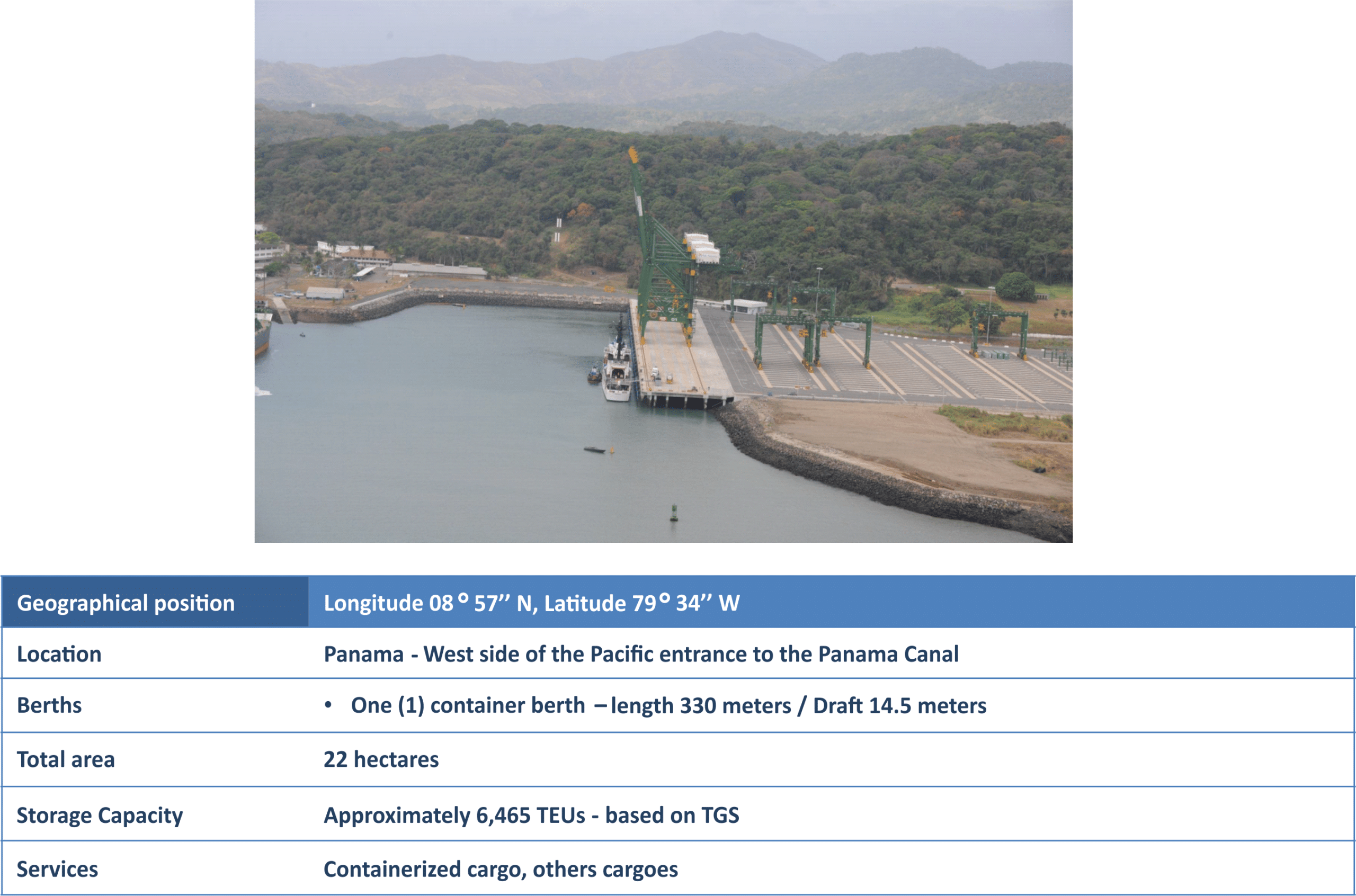
- Located at the west side of the Panama Canal Pacific entrance, trucks are not allowed to use the “Puentes de las Americas” bridge since it is under maintenance works therefore trucks/containers from PSA have to make a turn that adds approximately 40 kms to cross the second bridge over the canal and reach Panama city or the highway to Cristobal, Free Zone or MIT.
- Since core business is containerized cargo, General cargo and special projects cargoes needs to negotiate a window in order to get a space at the only pier the terminal has therefore berthing will depend on the fixed schedule of the regular liner vessels that has contract with the terminal.
CARIBBEAN SECTOR
Panama Port Company – Cristobal
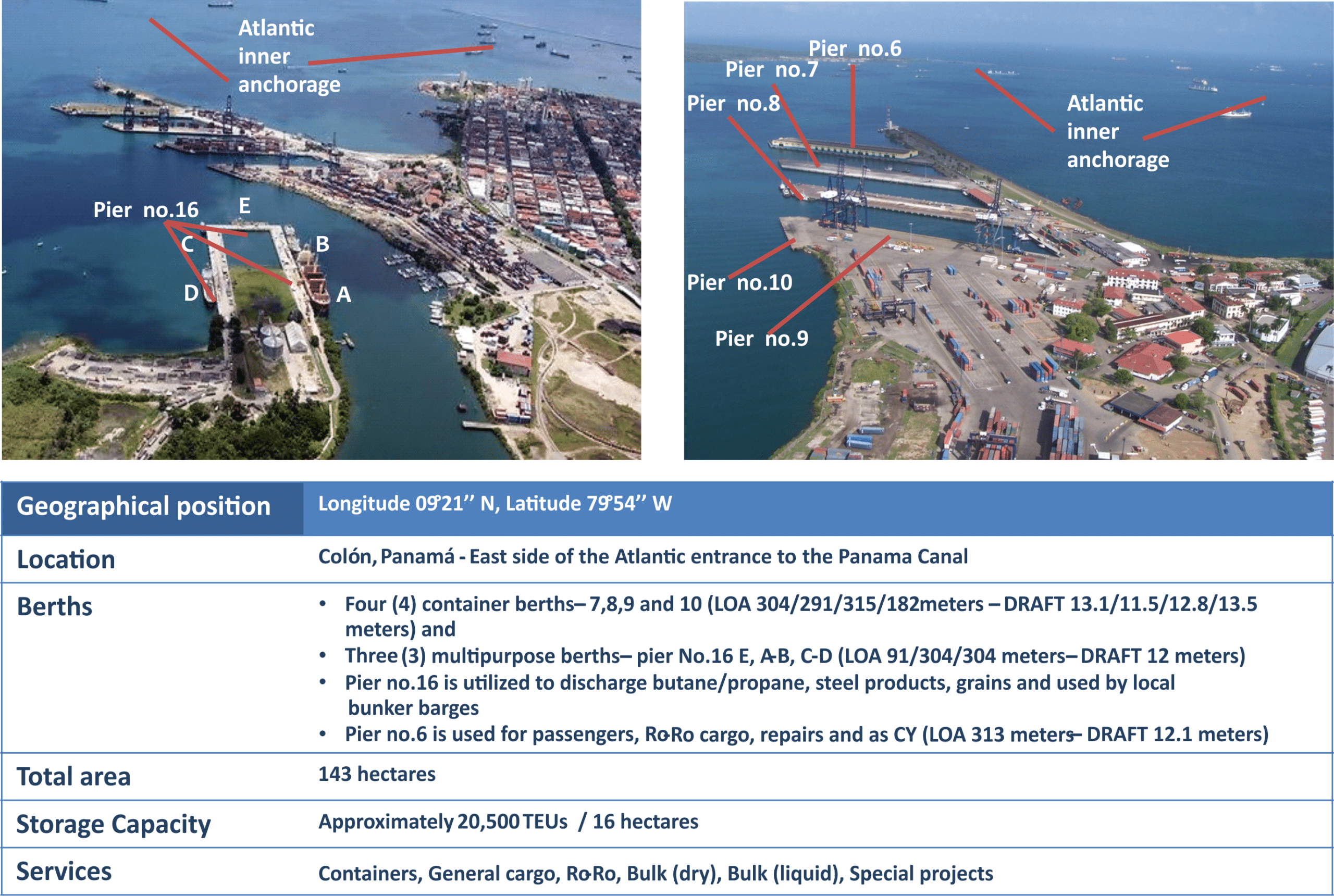
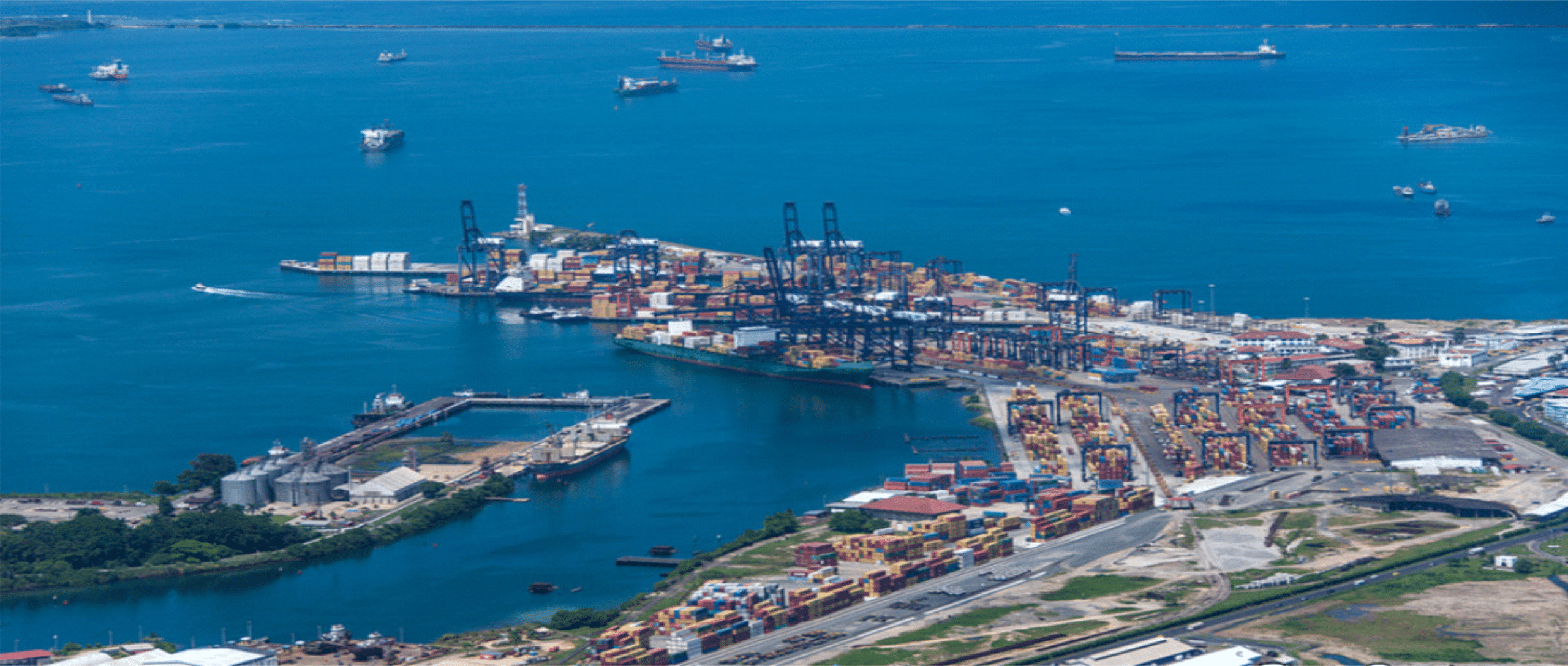
- With a TEU handling capacity of over 800 thousand units, this seaport has road access to Colon Free Zone and a railroad interface on-dock that allows easier container movement. With a total of 3 berths, 16 hectares dedicated to container storage, 3 Panamax and 8 Post Panamax vessels gantry cranes, the expansion plans include the acquisition of 10 additional Panamax and Post Panamax cranes, and a total extension over 3,700 meters of quay.
- Cristobal has a great potential to consolidate itself as an important node for containerized, bulk, liquid and general cargo at the Atlantic. Its accessibility to the canal and important maritime routes, the expansion programs on infrastructures and the investments plans on equipment and human resources are key elements that will generate more capability to handle larger volumes of cargo in a near future.
- Pier 16 is designated to discharge butane/propane, petroleum products, steel products, bulk cargo where grains have priority at position AB. Pier is also used by local bunker barges, therefore is heavily congested and vessels have to face considerable delays to get berth space.
- Dry bulk cargo must be discharged direct into trucks with the use of hoppers and discharge rate is subject to weather conditions and truck rotation. Except for grain (corn, soya bean) there is no storage capacity at the terminal and average discharge rate is in the region of 5,000 metric tons per day WP.
Manzanillo International Terminal
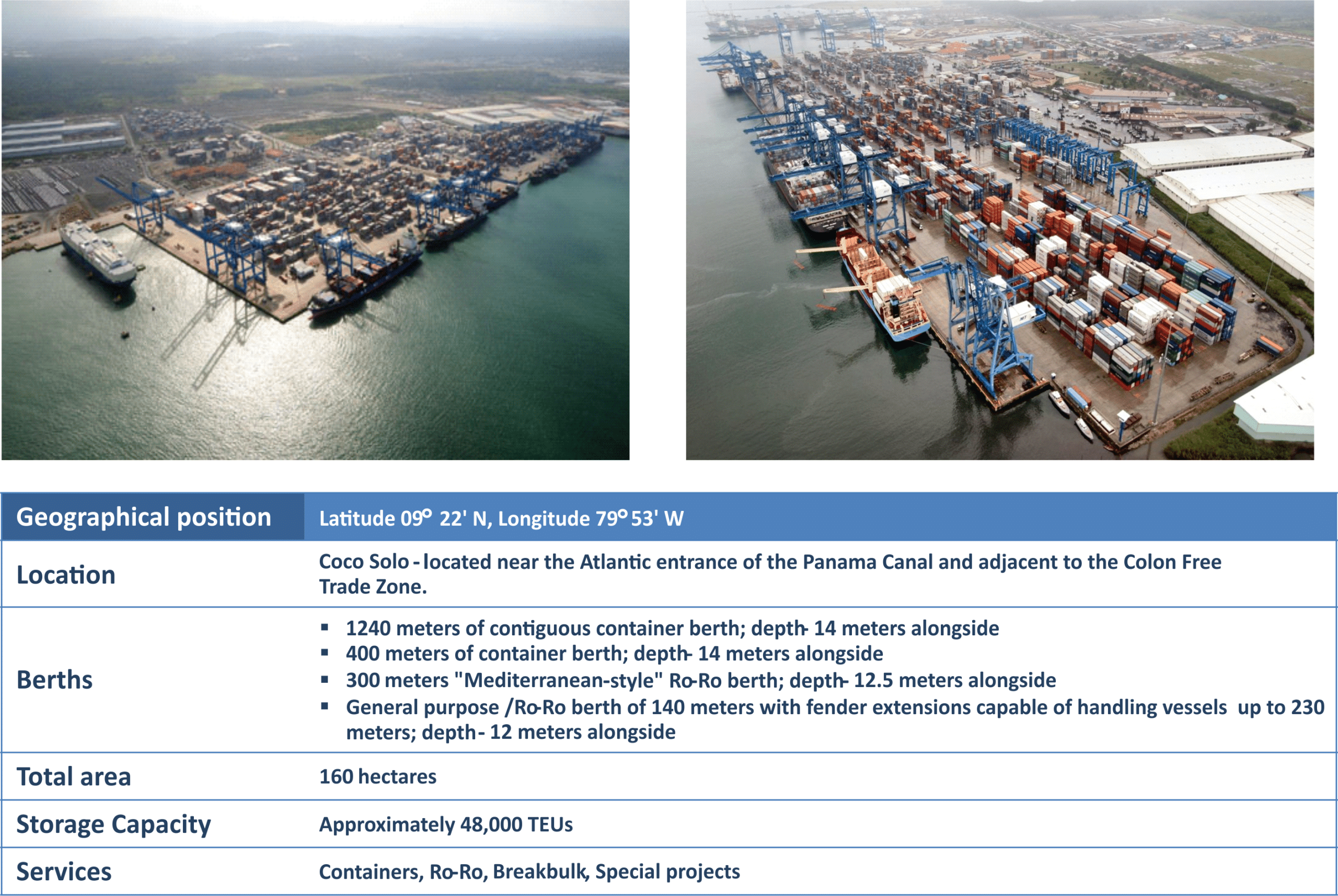
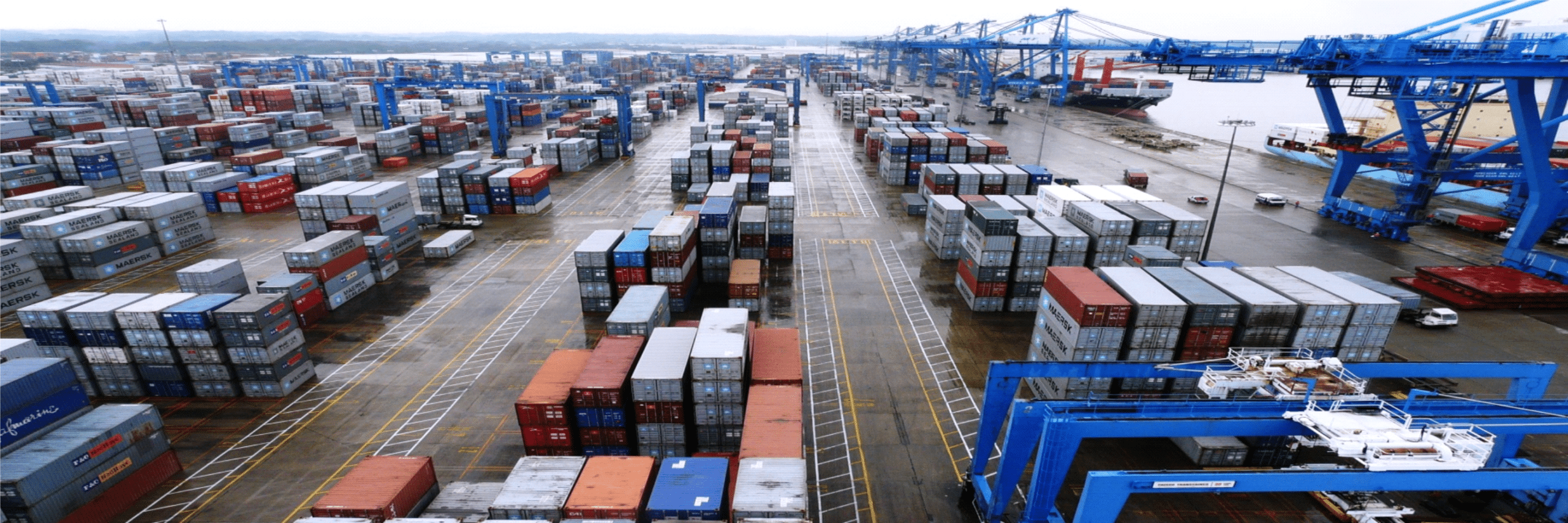
- Offers efficient and reliable port services to shipping lines transiting the Panama Canal or serving the Caribbean and South American region.
- Manzanillo International Terminal is becoming a full logistics complex that includes a first world container and Ro-Ro terminal, large container storage areas, a logistics park, and a multimodal platform that connects maritime, ground, railroad and air transportation services.
- Average waiting time for general cargo vessels are in the region of 24 hours depending on the activity, The port handles 1.9 million TEUS annually with a handling capacity of 2.2 million TEUS. Transshipment operations represent 91% of their containerized activity and is the main activity in the terminal besides offer service to vessel that brings project cargo and over dimension cargoes.
Terminal Granelera Bahia Las Minas
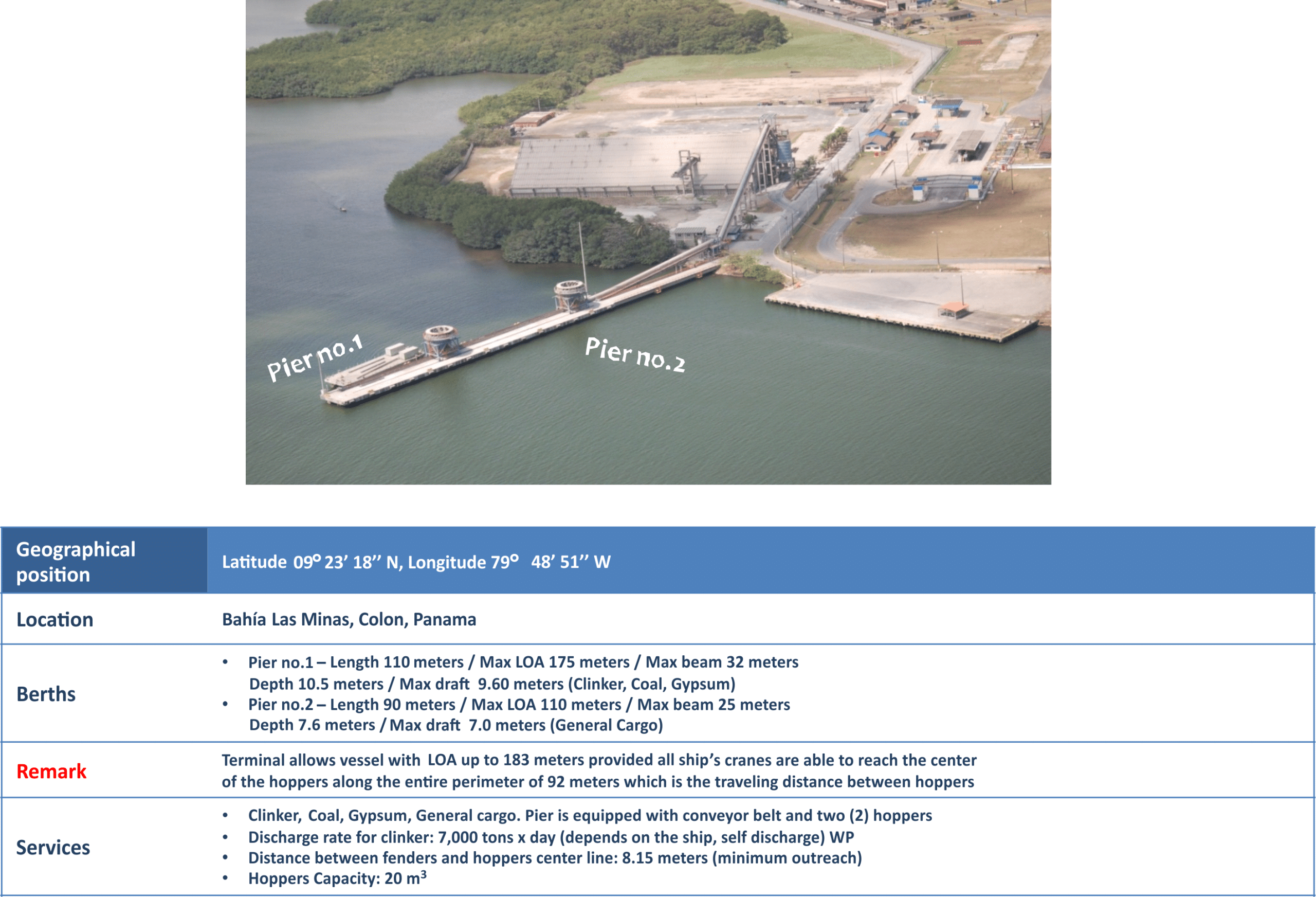
- Terminal is part of the ARGOS Group and their principal activity is to receive clinker, cement, gypsum and coal.
- Pier no.2 has a low activity and although is suitable for general cargo operations the short length and draft restrict the number of vessel that can berth at that location.
- Pier no.1 has priority for docking and/or undocking therefore the ship berthed at pier no.2 will have to follow indications from the terminal. If pier no.1 is not occupied the max LOA allowed at pier 2 is 120 meters.
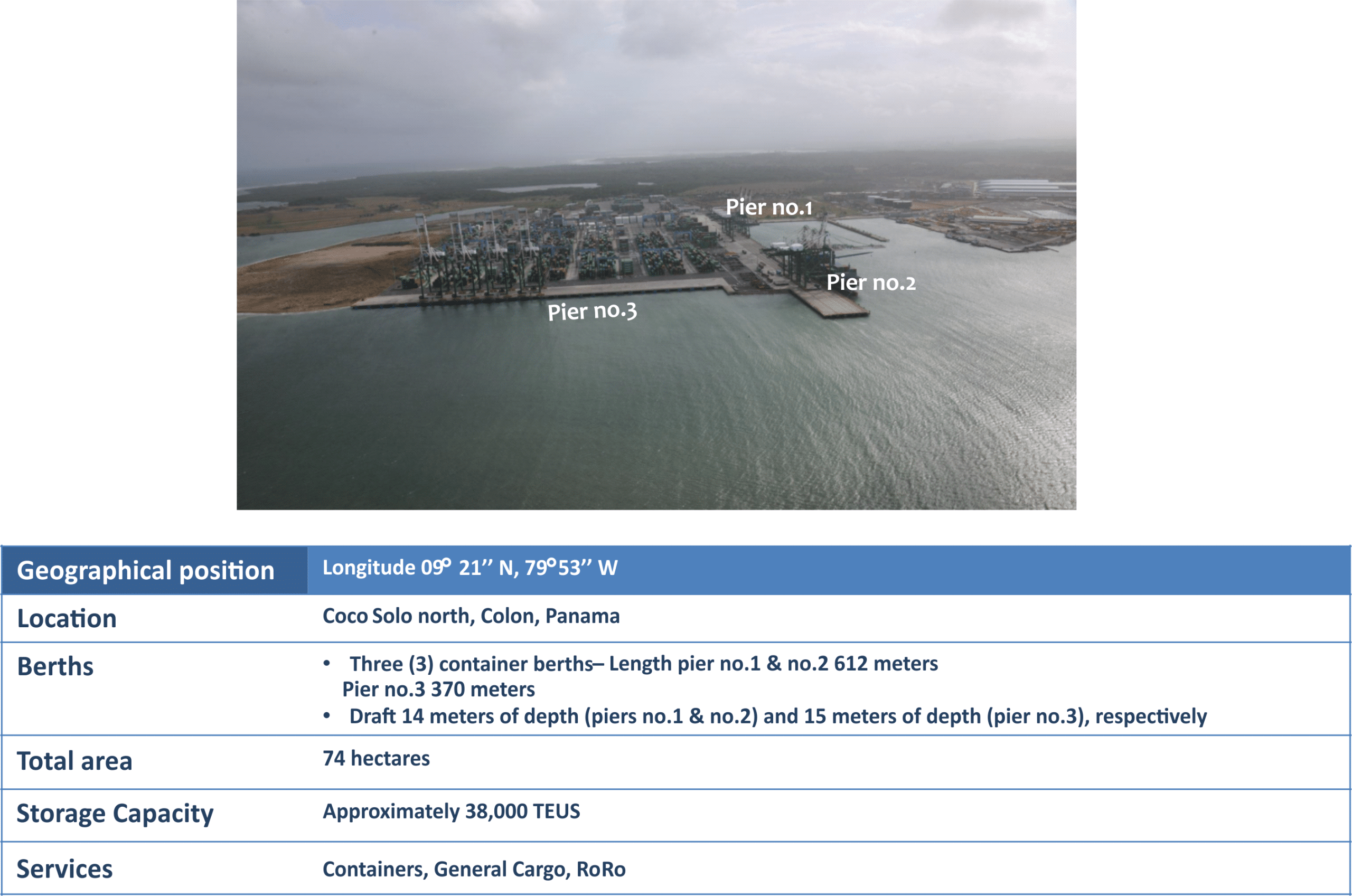
- Subsidiary company of Evergreen Group, which provides services to all shipping companies.
- Evergreen vessels has priority and terminal is presently being also used by Cosco, Yang Ming, Hanjin, Crowley among others
- Equipped with 5 Panamax and 5 Post Panamax vessels gantry cranes.
- Is a modern port specialized in handling containers, general cargo and rolling stock, with the most advance technology for a fast and efficient cargo transshipment. They provide services to all shipping lines with a fair system: “First come, first serve“.
